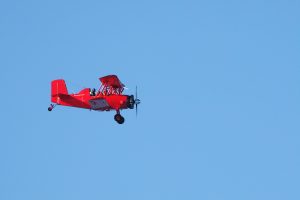The Charity
Aviation
Maritime
GA1306

Initial Report
I write to report an event in a motorglider at 3000ft 20NM WNW of Exeter Airport in which I was subjected to an intensely loud noise in the headset, sufficient to distract and confuse. The noise was pulsed, too fast to count, but the pulses were audibly separate. There was no musical note, as might be heard in audio feedback. The sound started and stopped instantly, as though keyed. No fading in or out as might be expected if flying in and out of a stationary beam. A constant noise lasting 20secs implies a very broad beam or active [radar] tracking. The pattern of 10-20secs constant noise then short periods of 2-5secs could be consistent with automatic tracking and then practice manual tracking. The noise was exclusively in the headset. Cockpit silent. The headset was an old Peltor, as passive as they come, and absolutely not an active noise-cancelling set. The headset contains no batteries or any other energy storage device. I have a lifetime interest in electronics. Feedback within the aircraft was obviously a possibility. Blocking the microphone, switching off a handheld VHF made no difference. After landing, I confirmed that no mobile calls or messages had been received. Most significantly, what also made no difference was turning the aircraft VHF volume to zero. In that state, there is no path by which electrical energy from the aircraft can reach the headphones. But an external microwave field most certainly could affect the aircraft. Perhaps ours especially because it is a GRP airframe, transparent to Radio Frequencies (RF).
I was aware that there was a military exercise near my route. Plotting my GPS tracklog and the exercise area the next day it was clear that I had entered the area by up to ½NM, but 30mins after programmed completion. Microwave exposure is the basis of a number of military area defence and crowd control techniques and pilots will remember the recent G7 conference in Cornwall where airspace was closed west of Bodmin. It is at least possible that some of this intruder detection and discouragement equipment is being trained on by our forces. I am confident that the energy source was external to the aircraft.
Exercise Information: The associated exercise to which the reporter refers appears to have been one that involves the training of ground-to-air controllers. These exercises are relatively common and are detailed in the standing AIC Y042/2020. The specific NOTAM information was:
Multiple fast jet aircraft and helicopters will conduct high energy manoeuvres within 20NM radius: 51N 004W (SW Barnstaple, North Devon). Aircraft may operate at speeds up to 450kts IAS and may be unable to comply with RAC. Aircraft shall remain outside of controlled airspace. For further info AIC Y042/2020 refers. OPS CTC 01526 347716. 2021-10-0119/AS3.
CAA Comment
CHIRP Comment
Although the reporter seemed convinced that the noise in his headset was the result of a directed military radio-energy beam, this could not be assumed and was probably unlikely because of restrictions on the use of such equipment in civil airspace. The HQ Air Command staff confirmed that there are strict rules for the employment of electronic countermeasures, which meant that they could only be used in designated military range areas (but some conspiracy theorists might argue that they would say that wouldn’t they if there was some form of new or experimental technology in use!). We’re not electronics experts at CHIRP, and without any definitive measurements or observations of any signals it’s not possible to determine what caused the noise. However, it’s known that mobile phones can cause similar interference to car speakers when communicating with and changing cells, even if no actual call is in progress. The reporter says that they had their mobile phone with them (but that no calls or messages were received) and so there is a possibility that this was the source of the interference. Other high-powered RF transmitters (and even high-power welding kit) can have similar effects due to the speaker/headset wires acting as an aerial even if the equipment is turned off. Whether this is feasible in the reporter’s particular passive headset is not known but, given that the headset was an ’old Peltor’, perhaps it lacks the interference protection that more modern units might have?